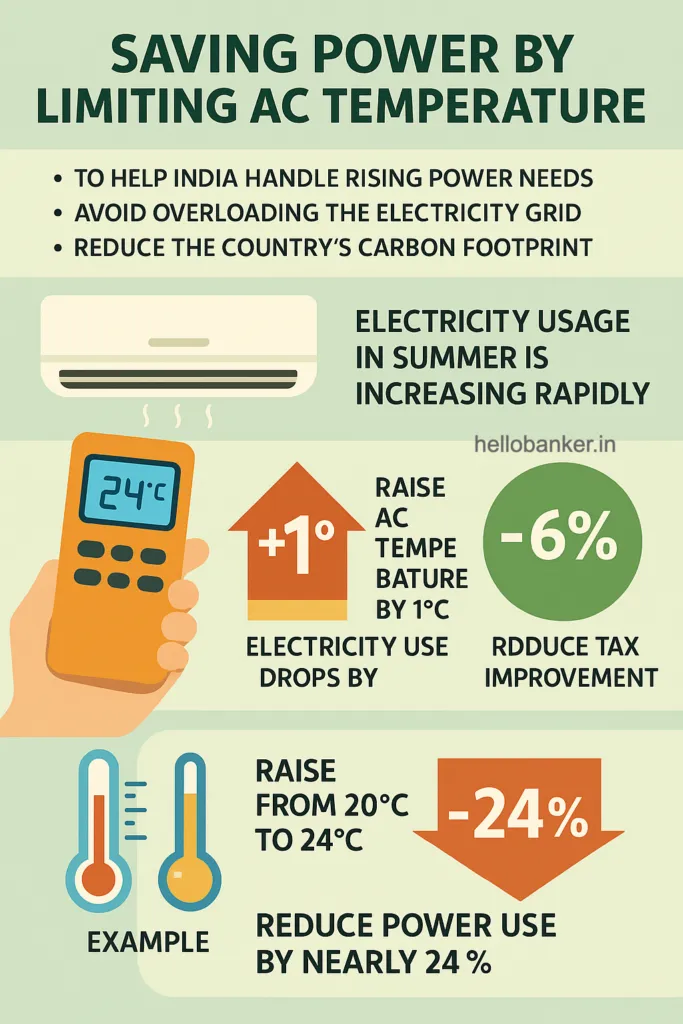New AC Rules in India! Now You can’t use AC below 20°C

In a big step to save electricity and promote energy efficiency, Union Minister Manohar Lal Khattar has announced that air conditioners (ACs) across India will soon be allowed to run only within a fixed temperature range — between 20°C and 28°C. This means that once the rule comes into effect, you will not be able to cool your room below 20°C or heat it above 28°C, whether at home or in offices, malls, or any other place.
Why Government has introduced these new AC rules?
The goal behind this new rule is to cut down on unnecessary energy use, especially during the summer when the demand for electricity goes up sharply. Many people set their ACs to very low temperatures like 16°C or 18°C, which not only uses a lot of electricity but also puts a huge burden on the power supply system. Most of India’s electricity still comes from coal power plants, so higher usage also means more pollution and carbon emissions.
The Bureau of Energy Efficiency (BEE) has said that most Indians usually set their ACs at around 20°C or 21°C — which is much colder than needed for comfort. In fact, experts say that the best temperature for comfort is between 24°C and 26°C, especially when considering the warm and humid climate of India. The new rule will help change people’s habits and make AC usage more responsible, without causing discomfort.
Manufacturers of air conditioners will now have to update the settings of their machines to follow this new temperature limit. This may involve reprogramming devices or sending software updates, so that users cannot set the temperature below or above the allowed range.
Is this Rule Mandatory? Will Everyone have to follow this?
The government has said this rule will be mandatory, not just a suggestion, and that steps will be taken to make sure it is followed — though the full details of how it will be enforced are yet to be announced.
AC and the Power Consumption

The main aim is to help India handle rising power needs, avoid overloading the electricity grid, and reduce the country’s carbon footprint. With more and more people buying ACs every year, especially in cities, electricity usage during summer has been increasing rapidly. By simply limiting the temperature settings, the country can make a big difference in saving power. According to BEE, every time you raise your AC temperature by just 1 degree, your electricity use drops by around 6%. For example, if you raise your AC temperature from 20°C to 24°C, you could cut down your power use by nearly 24%, saving money and helping the environment.
Global Rules for ACs
This move also follows what many other countries are doing. For example, Japan recommends setting ACs to 28°C in offices. Spain and Italy have passed laws that stop public buildings from setting their ACs below 27°C or 25°C. China and Belgium also have strict rules for government offices. In contrast, India’s rule — setting the range from 20°C to 28°C — is more flexible but will apply to both homes and public places, making it broader and more impactful than the rules in many other countries.
Finally, while earlier suggestions by the government, like in 2018, were just advice (like setting ACs to 24°C), this time the minister has clearly said that new rules are being implemented, and they will be compulsory. The government wants to not only change how people use air conditioners but also create a mindset shift — helping people understand that setting the AC to a super low temperature is not necessary and is actually harmful in the long run.
This simple rule — limiting AC temperatures — can have a huge impact on energy savings, electricity bills, and India’s climate goals. As India deals with more heatwaves and increasing demand for cooling, such steps are necessary to build a more energy-efficient and sustainable future for everyone.
